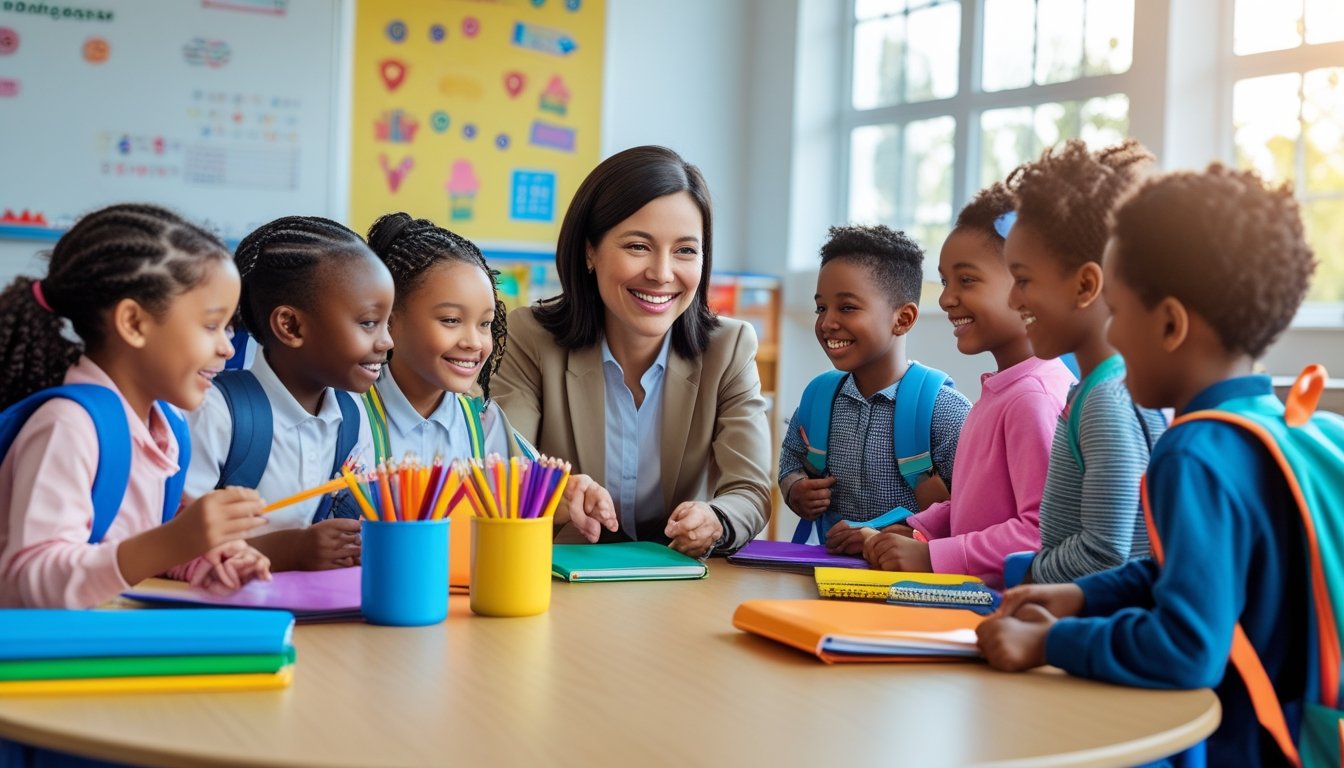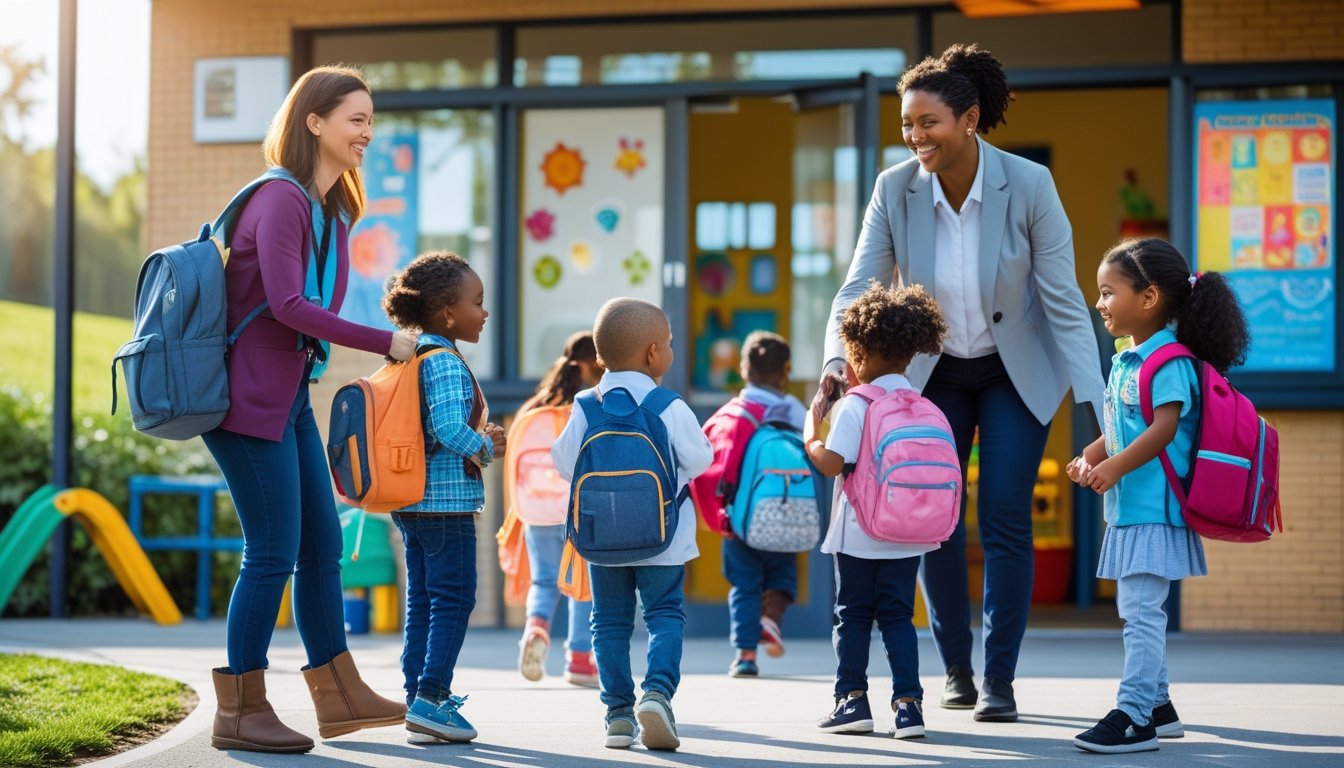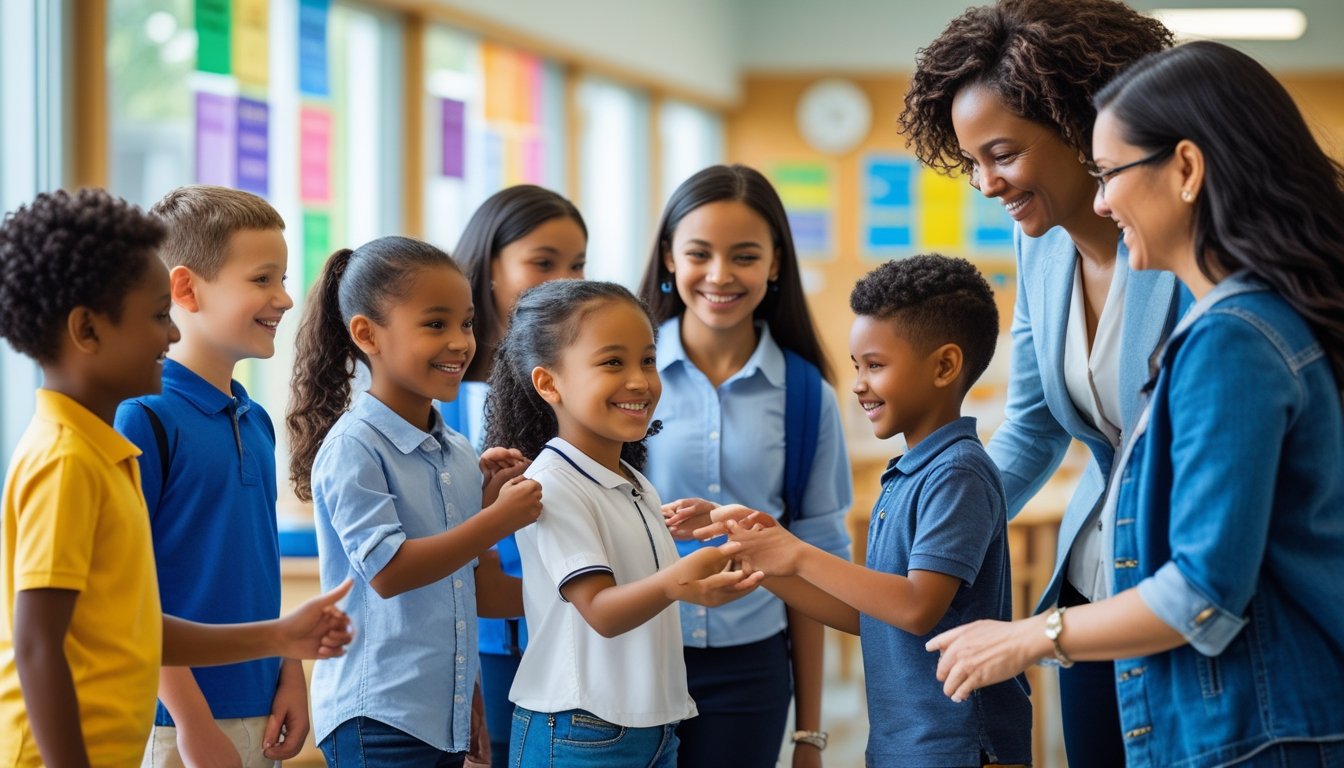Late updated: 08 Jun 2025 15:06
Written by:
Innovative Tips For Supporting Children's School Transitions: Seamless Strategies for Success
Supporting children during school transitions often involves innovative thinking and strategies, as these periods can be challenging for both the kids and their parents. Understanding each child's unique needs helps create a transition plan that ensures a smooth and successful journey to their new school environment. By combining traditional wisdom with creative tools, we can help our children adapt more easily.

We all want to ensure our children feel comfortable and confident during these changes. Leveraging practical techniques such as visiting a new school beforehand or using dedicated programmes for added support are essential aspects of this transition. Every small step can make a big difference, aiding children in acclimating to new routines and environments.
In our exploration of effective methods, we will also consider resources that enhance the transition experience. By drawing on a range of ideas, we aim to provide a diverse toolkit to support children in navigating these important changes smoothly and positively.
Key Takeaways
- Tailor strategies to each child's needs for effective support.
- Combine traditional methods with innovative resources.
- Use practical tips for a smoother transition experience.
Fundamental Strategies For Supporting Children's School Transitions
To assist children in navigating school transitions, it's essential to concentrate on key areas that lay the foundation for a positive shift. These include recognising important milestones, fostering a sense of belonging and wellbeing, and supporting engagement and independence. Each of these elements contributes to a smoother transition experience.
Understanding School Transition Milestones
School transitions mark significant developmental milestones that shape a child's educational journey. As children start school or move to new educational settings, it's crucial to recognise and support their readiness.
Orientation programmes can be instrumental in this respect. By allowing children and parents to familiarise themselves with new environments, these programmes alleviate anxiety and unfamiliarity.
Regular assessment and feedback help track individual progress. They identify areas where children might need additional support, particularly in their early years. Recognising milestones facilitates personalised strategies that address each child's unique needs, ensuring they feel prepared for the changes ahead.
Fostering Belonging And Wellbeing
A child's sense of belonging directly influences their wellbeing and academic success. Creating an inclusive learning environment is, therefore, pivotal in easing transitions. Teachers and caregivers can foster belonging by building strong relationships and fostering open communication.
Incorporating activities that encourage shared experiences and group interactions can enhance this. Inclusive practices should celebrate diversity and provide all children with opportunities to contribute and feel valued.
Focusing on wellbeing, schools should provide emotional support through guidance and resources. Encourage children to express their feelings, and maintain an atmosphere where they feel comfortable seeking assistance.
Encouraging Engagement And Independence
Encouraging children to actively engage with their new environment fosters independence. Providing opportunities for choice empowers them and builds confidence.
Structured activities that allow decision-making reinforce independent thinking. Supportive learning environments should enable children to explore their interests and develop problem-solving skills.
Collaboration with parents is also vital. Sharing resources, such as guides and videos, helps parents assist their children in developing these skills at home.
Regularly updating parents and involving them in school activities keeps them informed and enables them to reinforce strategies, bridging the gap between home and school in their child's transition process.
Innovative Approaches And Resources For Positive School Transitions

Innovative strategies in supporting children's school transitions can significantly enhance their ability to adapt and thrive. Establishing strong connections, using engaging activities, promoting inclusivity, and integrating technology are all fundamental to this process.
Building Positive Relationships With Educators And Families
Fostering positive relationships with educators and families is essential. We focus on open lines of communication to ensure parents and guardians feel involved in their children's education journey. Regular meetings, updates, and open door policies for parents help establish trust with educators.
Creating a welcoming atmosphere for culturally and linguistically diverse (CALD) families ensures that every child feels a sense of belonging. This approach encourages children to embrace new environments with confidence. Professional learning opportunities for educators equip them with tools to better support these relationships.
Transition Activities And Play-Based Learning
Transition activities and play-based learning are instrumental in easing school transitions. We incorporate engaging activities such as role play and creative games that focus on language, literacy, and numeracy. These methods help children develop essential cognitive skills in a fun and supportive environment.
Incorporating transition activities into the curriculum helps children navigate changes between preschool, primary, and secondary school. By linking play and learning, educators can create an interactive atmosphere where children learn to adapt and solve problems.
Fostering Inclusion, Diversity, And Equity
Promoting inclusion, diversity, and equity is at the heart of our approach. We ensure our policies and environments cater to all children, including those with disabilities and those from diverse backgrounds. Creating an inclusive environment helps build confidence and fosters academic success.
Educators receive training and resources to support diversity in the classroom. This includes adapting enrolment practices and tailoring curricula to reflect varied cultures and abilities. By recognising and celebrating diversity, we create a harmonious educational experience for every child.
Utilising Technology And STEM In Transition Support
Incorporating technology and STEM into transition support offers children new ways to engage with learning material. Early exposure to these subjects fosters problem-solving and critical thinking skills, preparing pupils for the challenges of modern education.
Through digital platforms, we provide resources and activities that make learning interactive and accessible. Educators integrate technology into lessons, using educational apps and tools to support children's explorations. This not only enhances learning but also equips children with essential 21st-century skills.
Frequently Asked Questions

Our guide addresses various challenges in supporting children's transitions to new school environments. We explore strategies that cater specifically to students with special needs and ways to ease transitions for young learners.
How can educators facilitate smoother transitions for students with special educational needs?
Educators can develop individualised transition plans, focusing on each student's unique requirements. Collaborating with special education professionals allows for tailored support. Establishing routines and providing a familiarisation period can benefit students, helping them to feel more at ease.
What are some effective approaches to assist children coping with changing schools?
Starting early with open discussions about the move can reduce anxiety. Visiting the new school and meeting teachers beforehand helps to familiarise children with their future environment. Additionally, maintaining a positive outlook encourages children to embrace the change with confidence.
At which stage is a school transition most challenging for children, and how can parents support them?
The initial stages of transition are often the hardest. Here, parental support is crucial. Providing consistent routines at home and discussing feelings openly can aid children in adjusting. Being patient and understanding helps to alleviate any stress or apprehension.
Can you offer examples of successful transition activities that engage young learners?
Storytelling and role-playing activities encourage children to express their feelings about transition creatively. Interactive tours of the new school allow for exploration and engagement, making the new environment less intimidating.
What strategies can practitioners employ to aid children during transitions within the childcare environment?
Practitioners should establish clear expectations and provide structure. Using visual schedules and offering frequent reassurance enables children to understand and anticipate what comes next. Allowing children to voice their discomfort helps in creating a supportive atmosphere.
What techniques can parents and teachers use to help children with autism adapt to new school routines?
Creating visual aids and social stories can assist in explaining new routines. Breaking down tasks into manageable steps helps in reducing overwhelm. Consistent communication between parents and educators is vital to monitor progress and adjust strategies as needed.
